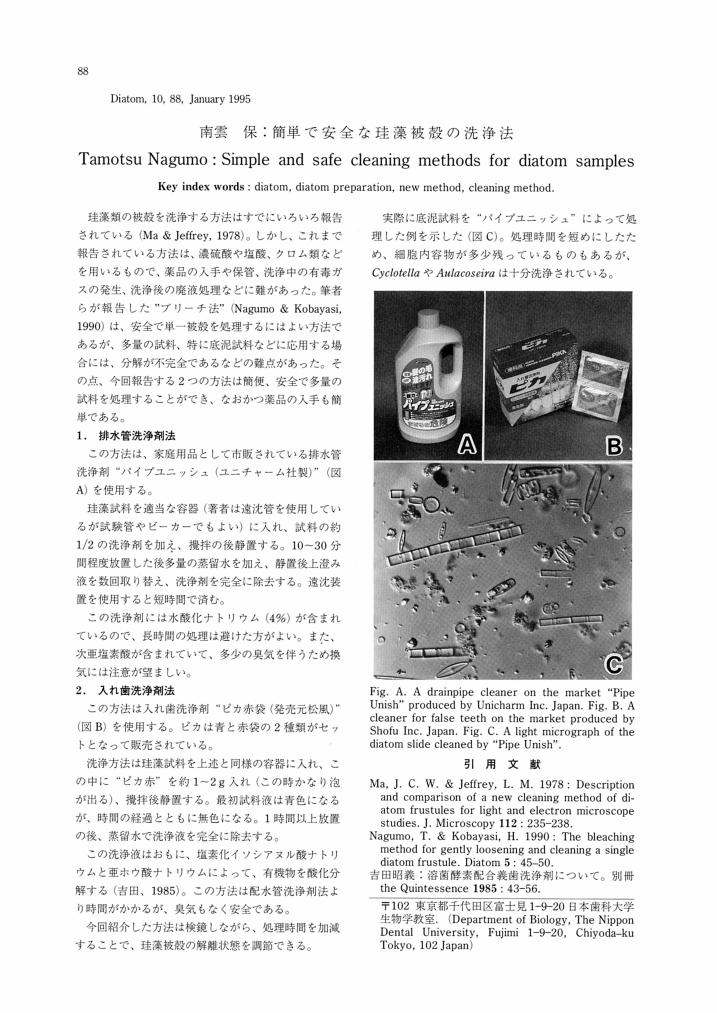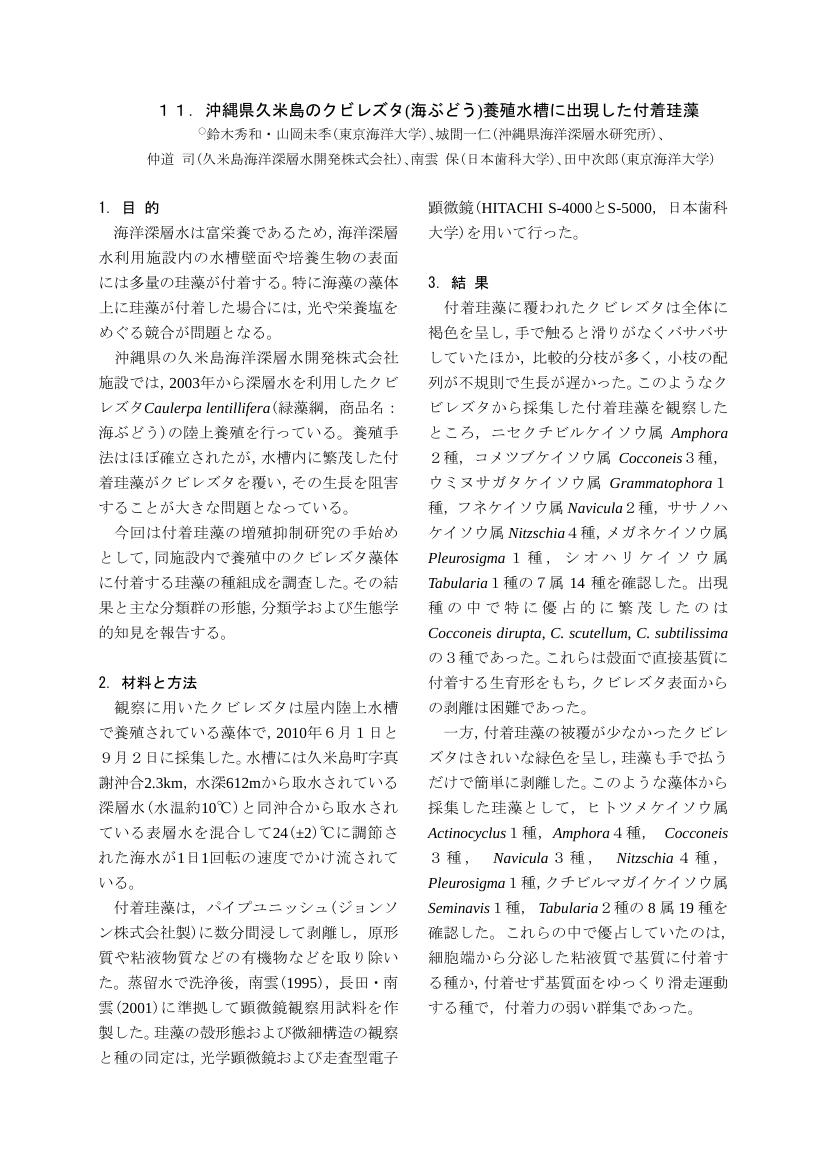2 0 0 0 OA 簡単で安全な珪藻被殻の洗浄法
1 0 0 0 OA 珪藻類の分類体系(総説)~現生珪藻の属ランクのチェックリスト
- 著者
- 鈴木 秀和 南雲 保
- 出版者
- 日本プランクトン学会
- 雑誌
- 日本プランクトン学会報 (ISSN:03878961)
- 巻号頁・発行日
- vol.60, no.2, pp.60-79, 2013-08-25 (Released:2019-06-20)
- 参考文献数
- 35
The diatoms are one of the most successful microalgal groups in both aquatic and terrestrial habitats. They possess architecturally complex and unique siliceous cell walls (valves and girdle bands). There are probably well over ca. 105 species, the vast majority of which are not uniquely identified as such. Historically, most diatomists have long assumed that the diatoms contain two groups, the centrics and the pennates, which can be distinguished by their pattern centres or symmetry and mode of sexual reproduction. Round et al. (1990), however, recognized three classes—Coscinodiscophyceae (centric diatoms), Fragilariophyceae (araphid pennate diatoms) and Bacillariophyceae (raphid pennate diatoms)—giving equal ranking to the raphid pennate diatoms and the araphid pennate diatoms. Recently, an alternative classification to that of Round et al. has been formally presented by Medlin and Kaczmarska (2004), primarily based on molecular data. By combined molecular and morphological support, they proposed two new subdivisions (Coscinodiscophytina and Bacillariophytina), emend the classes Coscinodiscophyceae and Bacillariophyceae and proposed a new class, the Mediophyceae (the CMB hypothesis, Theriot et al. 2009). Howeber, the CMB hypothesis is not universally accepted. The most recent taxonomic revision of the diatoms gives class status to the radial centrics, the multipolar centrics (including the Thalassiosirales), and the pennates. The diatoms have an extensive fossil record and wealth of morphological features upon which to base their systematics and so they are an ideal group in which to study the congruence of molecular, morphological and fossil data sets. Here the current diatom classification at the generic rank (413 genera) is presented based on the taxonomical and nomenclatural information.
1 0 0 0 OA 沖縄県久米島のクビレズタ (海ぶどう) 養殖水槽に出現した付着珪藻
1 0 0 0 OA 珪藻類の採集と光学顕微鏡観察(植物分類学研究マニュアル18)
- 著者
- 鈴木 秀和 南雲 保
- 出版者
- 日本植物分類学会
- 雑誌
- 分類 (ISSN:13466852)
- 巻号頁・発行日
- vol.15, no.1, pp.75-81, 2015-02-20 (Released:2017-03-25)



